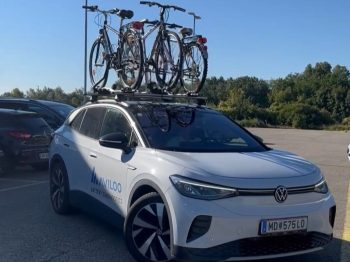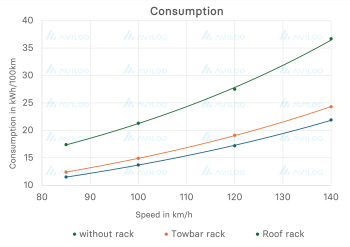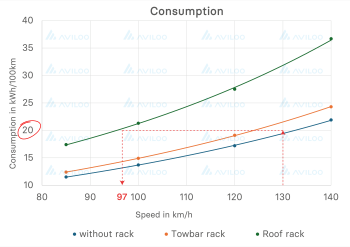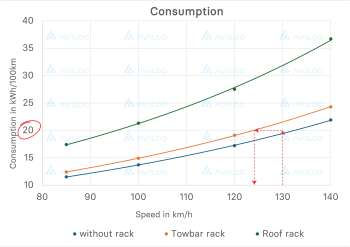EV range impact from roof racks revealed in new study
A new study revealing the impact of roof- and rear-mounted bike racks on electric vehicle range is now out.

The study found rear-mounted loads are significantly more efficient than roof-mounted
Aviloo, a specialist in EV battery diagnostics, analysed the energy consumption of a Volkswagen ID.4 under real but controlled conditions. The study, carried out on the A2 motorway south of Vienna, saw the fully electric SUV tested in three different scenarios: without any carrier, with a loaded roof rack, and with a loaded rear-mounted rack. The load consisted of three 28-inch trekking bikes.
Each configuration was tested at night, to avoid traffic influence, over a fixed 60km (37-mile) round trip route on the highway and with a constant speed and consistent baseline conditions.
The results show that at 130km/h (c.81mph), the unladen ID.4 achieved around 19kWh/100km (3.2m/kWh) while the version with the rear-mounted load achieved some 22kWh/100km (2.8m/kWh). But the efficiency figure for the VW with the roof rack fell to around 32kWh/100km (1.9m/kWh).
It goes without saying that the rides without any load or rack had the lowest efficiency figure.
But the study also found that rear-mounted loads are significantly more efficient than roof-mounted – and a minimal speed adjustment is enough to maintain range.
With the roof rack, someone who usually drives at 130km/h would need to reduce their speed by 33km/h (21mph) to 97km/h (60mph) to achieve the same consumption level as when driving without any load.
But with the rear-mounted rack, the required speed reduction is just 7km/h. This means that driving habits can essentially remain unchanged when using a rear-mounted rack.
Nikolaus Mayerhofer, CTO of Aviloo and test driver for all test rounds, said: “We want to bring clarity with our study.
“There are many half-truths about extra consumption due to loading. Our measurements clearly show that rear-mounted racks have minimal impact on range and driving behaviour. Roof loads, however, result in noticeable losses. The main physical reason for the clear differences is air resistance – it doesn’t increase linearly but quadratically. At double the speed, air resistance increases energy use fourfold.”
Study of different scenarios
What stood out in the study was the significant difference in consumption between the loaded scenarios, which became increasingly noticeable at higher speeds.
Aviloo said the small difference between the curve for the unloaded car (blue) and the curve for the test with the loaded rear rack (orange) was impressive (chart 1).

Chart 1
The roof rack is the biggest range killer
Someone accustomed to driving at 130km/h would need to reduce their speed by a full 33km/h to 97km/h to achieve the same consumption level as when driving without any load (chart 2).

Chart 2
The rear-mounted rack, on the other hand, is extremely efficient
The required speed reduction is just 7km/h.
This means that driving habits can essentially remain unchanged when using a rear-mounted rack (chart 3).

Chart 3
















Leave a comment